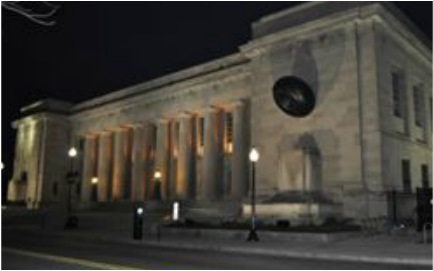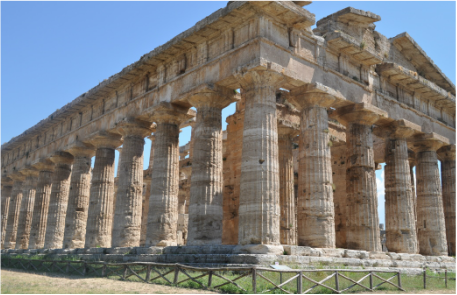|
In an age when cinder blocks and drywall are considered quality construction materials the architecture of the past might seem all but forgotten. Have you ever wondered why looking at ancient Greek temples is pleasing, calming, and/or inspiring? It’s all about the elements of the three main architectural orders: Doric, Ionic, and Corinthian. Two buildings, far apart historically and geographically, demonstrate the essentials of the Doric Order. Capital The most defining characteristic of the Doric Order is the column capital. The highest portion is more or less plain. Curly elements and carved flowers belong to other orders. A quadrangular-shaped piece tops the column and serves as the topmost section of the capital. The curved pillow-like segment between the very top and the column itself is called the echinus. Everyone loves a good echinus; it’s the place where column capital becomes the column itself. Echnini can be slim or puffy and they can define a structure. The Indianapolis Public Library boasts (mostly) Doric elements. Here, a square-shaped capital tops a sleek echinus and introduces a slender column. This modern building is 100 years old and was inspired by the temples of Greece’s past. The library is located on direct axis to another Classics-inspired Indianapolis landmark – the War Memorial. Entasis
The columns are no doubt the single most defining quality of Greek architecture. When the slight outward curvature of the columns at the Indianapolis Public Library are compared with those of the Temple of Hera (II) in Pestum, Italy a column’s entasis is apparent. Entasis is the bulging of the column drums (horizontal “blocks”) – smaller near the top and largest in the middle. Entasis was used to correct the flat, convex look straight columns have from a distance. The height of an entire temple was usually four to six times the diameter of the shaft at its lowest point. Fluting Those vertical grooves on columns are called flutes. Some think flutes may have developed as a permanent representation of the grooves in the timber of pre-marble structures. However, the combination of shadow and light created by the flutes reinforces its round structure when viewed from afar. The last column drum sits directly on the stylobate (base) of the building. The flutes lead directly to the base without a round horizontal element placed in between. Modern buildings, like the Indianapolis Public Library, will bend that rule. The designers placed a round base between the base of the column and the stylobate. The Temple of Hera (II)’s columns sit directly on the stylobate, as is normal for the Doric Order. So, whether it’s a child’s school assignment or an idea to redecorate your home – the right mix of entasis, echinus, and fluting can enhance your project. At the very least, knowing the basics of the Doric Order will enhance your understanding of new and old buildings alike.
48 Comments
|
AuthorRosina Eileen Khan is an Archives
January 2017
Categories |


